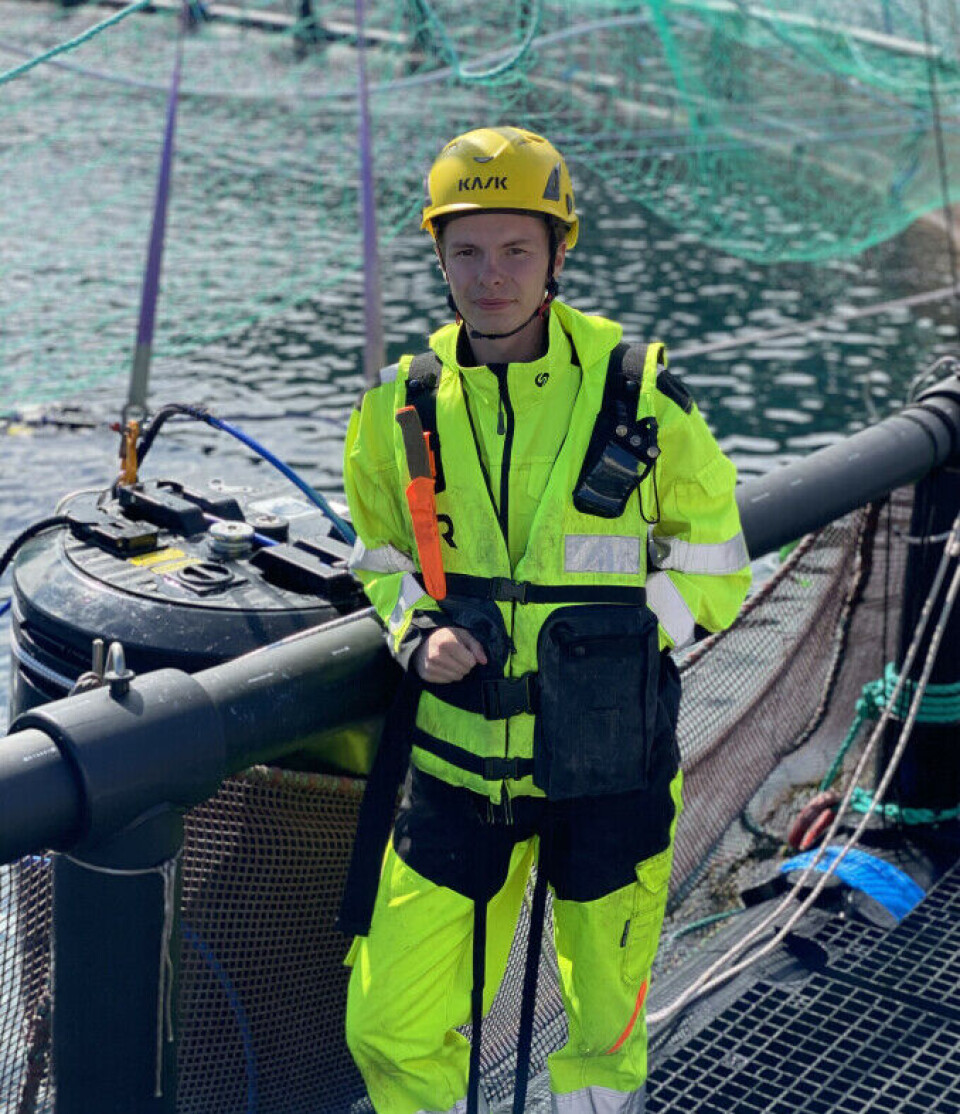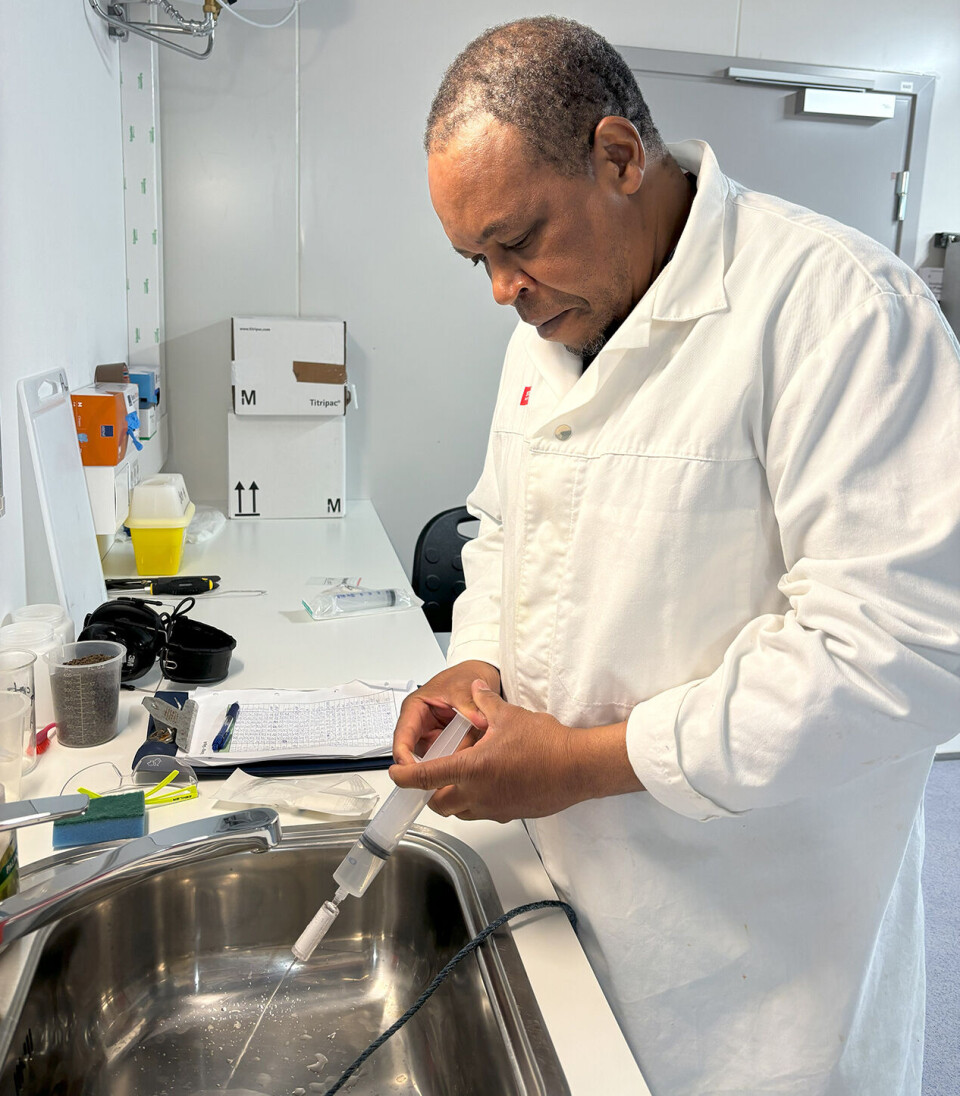THIS CONTENT IS BROUGHT TO YOU BY Nord University - read more

Could traces of bacteria in water combat salmon disease?
The bacteria yersiniosis is becoming a serious problem for the salmon industry. Researchers are now using environmental DNA to monitor the risk of infection.
Enteric redmouth
disease, caused by the bacterium Yersinia ruckeri, is a significant threat to marine fish, with mortality rates reaching up to 30 per cent. This disease is especially concerning for the Norwegian salmon farming industry, where outbreaks can lead to substantial losses.

Researchers and fish farmers are now working together to identify the key risk factors in the production chain.
“By using environmental DNA, we can get a picture of the infection pressure in the water. This allows us to monitor the entire group of fish instead of testing individual fish,” says Hans Arne Berg Frantzen.
Tiny genetic traces
Environmental DNA is DNA collected from environmental samples. A water sample contains genetic material shed by organisms into their surroundings, through urine, faeces, and skin cells.
By collecting water samples and filtering them, researchers can analyse the DNA to detect specific organisms, such as bacteria.
This non-invasive method of collecting DNA from the water in which the fish live allows researchers to monitor infection pressure without stressing or sacrificing the fish.
Frantzen is a master's student at Nord University and is an employee at ACD Pharma.
He is now working to help fish farmers tackle the persistent bacterium Yersinia ruckeri, which has become an increasing problem for Norwegian salmon farmers.
“2023 was a peak year for yersiniosis, with the highest number of outbreaks since 2012. All indications point to 2024 being even worse,” says Frantzen.
Stress and environmental changes
Although Y. ruckeri is a freshwater bacterium that thrives in relatively high temperatures, farmers have experienced that the disease can still break out in salmon after they are released into the sea.
Smolt is the young salmon that has adapted to live in saltwater after spending its early life in freshwater.
If the bacteria remain latent in fish from the smolt phase, the disease can break out when the fish experiences stress and environmental changes.
“The problem typically arises when the fish is transferred from freshwater to the sea. The fish becomes stressed, and those carrying the bacteria may develop the disease, especially if this happens during the summer,” explains Hetron M. Munang'andu, an associate professor at Nord University.
Risk for salmon in warm water
Another critical point is during the delousing process.
Recently, the Norwegian Veterinary Institute found that salmon populations with latent Y. ruckeri infections can release large amounts of bacteria during delousing treatments in warm water, called thermal delousing.
The bacteria become concentrated in the treatment chamber, while the fish are exposed to both stress and physical damage.

“Delousing involves significant risk, but much depends on what has happened before the delousing,” says Frantzen.
He points out that the fish are exposed to several risk factors before even entering the sea, such as sorting, transport, vaccination, and handling. Additionally, biofilters in hatcheries can harbour bacteria released by infected fish, creating further risks for infection.
“The disease risk can be managed with various measures, and we're exploring different approaches. So far, environmental DNA looks promising. The next question is how we handle it in real life,” he says.
Testing vaccinated fish
Frantzen explains that there is an urgent need to improve biosecurity, as the industry is dealing with increasing salmon lice. He also notes that half of all injection vaccines are now against Yersinia, indicating that it is becoming a growing problem.
“One thing I want to test is whether vaccinated fish continue to shed bacteria when stressed. This could be significant if the farmer groups fish from different smolt batches, such as one group vaccinated and another not,” he says.
Frantzen's research will be the first to use environmental DNA to identify critical infection points in salmon production, an essential step for managing diseases in the aquaculture industry. A total of 20 hatcheries are participating in the research project.
"We are very happy to be able to be able to contribute to solving problems in the industry, both through education and by adopting new technology," says Munang'Andu.
"Using environmental DNA to montior diseases in aquaculture is a completely new approach," says Frantzen.
He also highlights that vaccination and the use of bacteriophages – host-specific viruses that attack bacteria – are important measures against the disease.

This content is paid for and presented by Nord University
This content is created by Nord University's communication staff, who use this platform to communicate science and share results from research with the public. Nord University is one of more than 80 owners of ScienceNorway.no. Read more here.
More content from Nord University:
-
Kateryna's university has been bombed three times – but she's still teaching
-
5 things you didn't know about smart cities in the Arctic
-
AI sparked an idea that could improve road safety in Norway
-
These algae have been adapting for hundreds of millions of years
-
Bladderwrack in animal feed has the potential to reduce methane emissions
-
Researchers unveil the genetic history of the great white shark




































